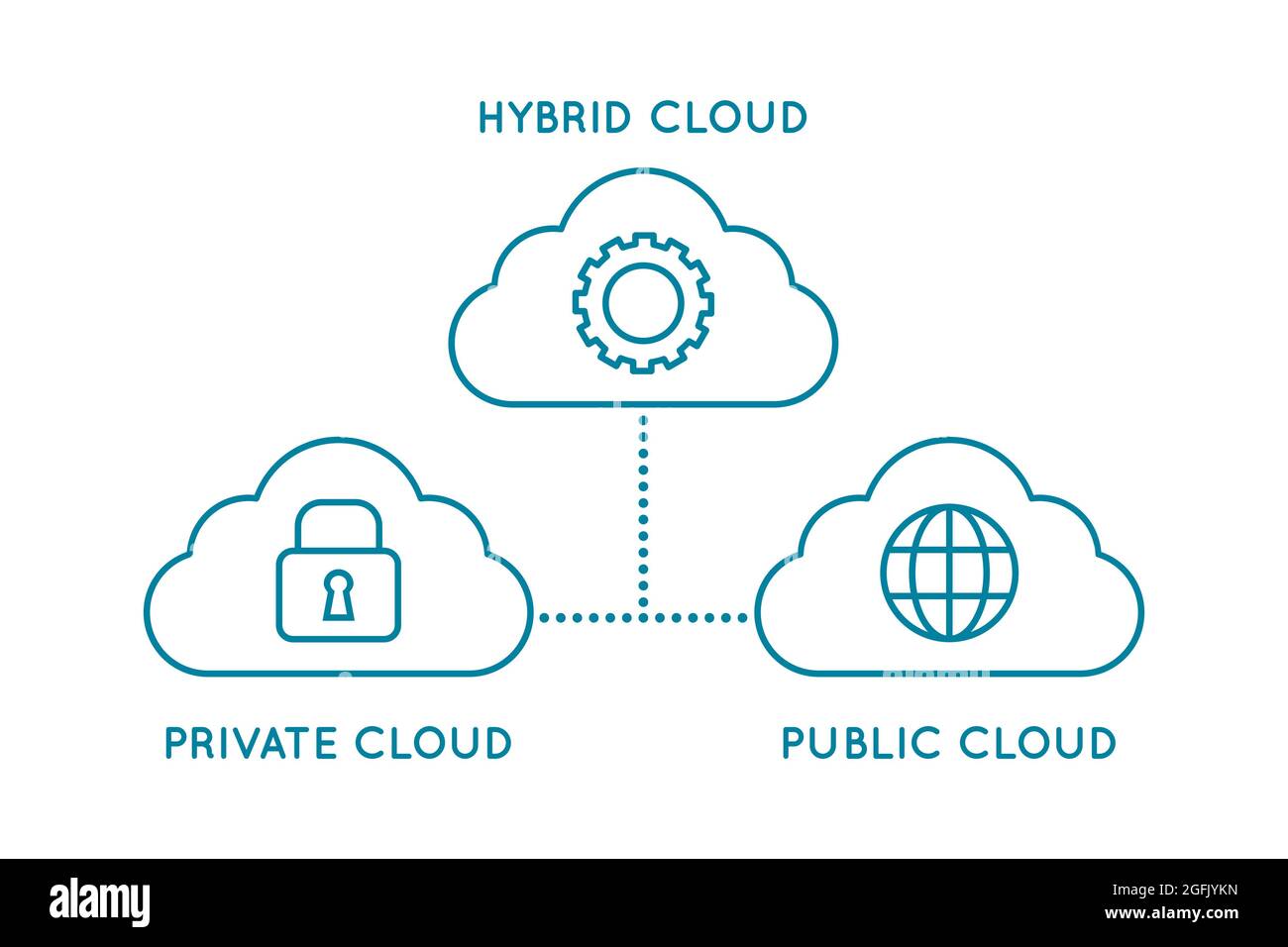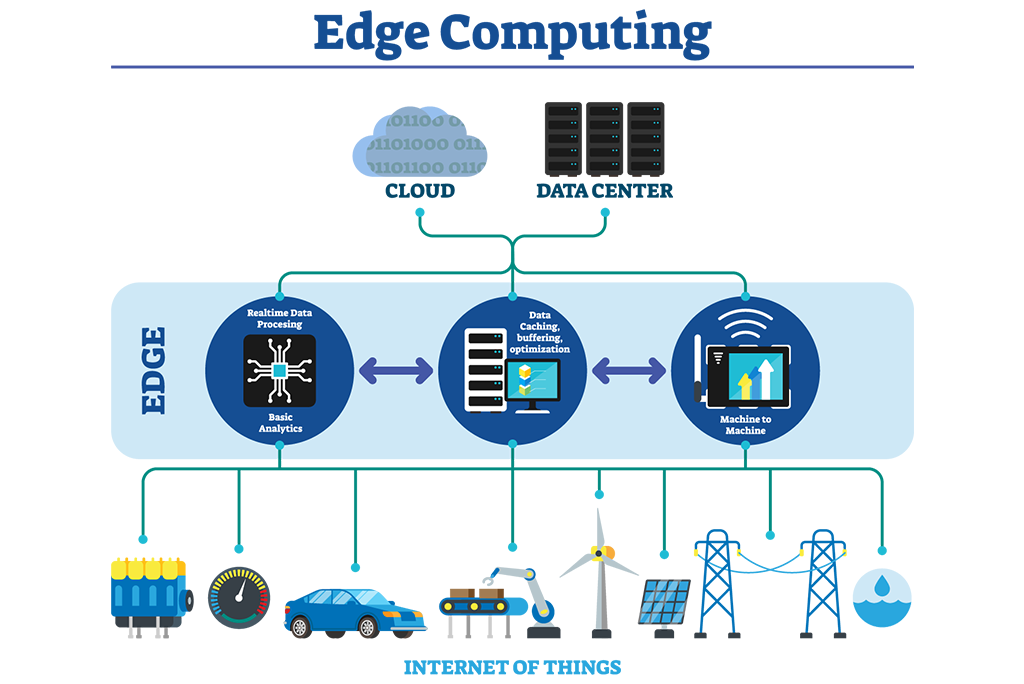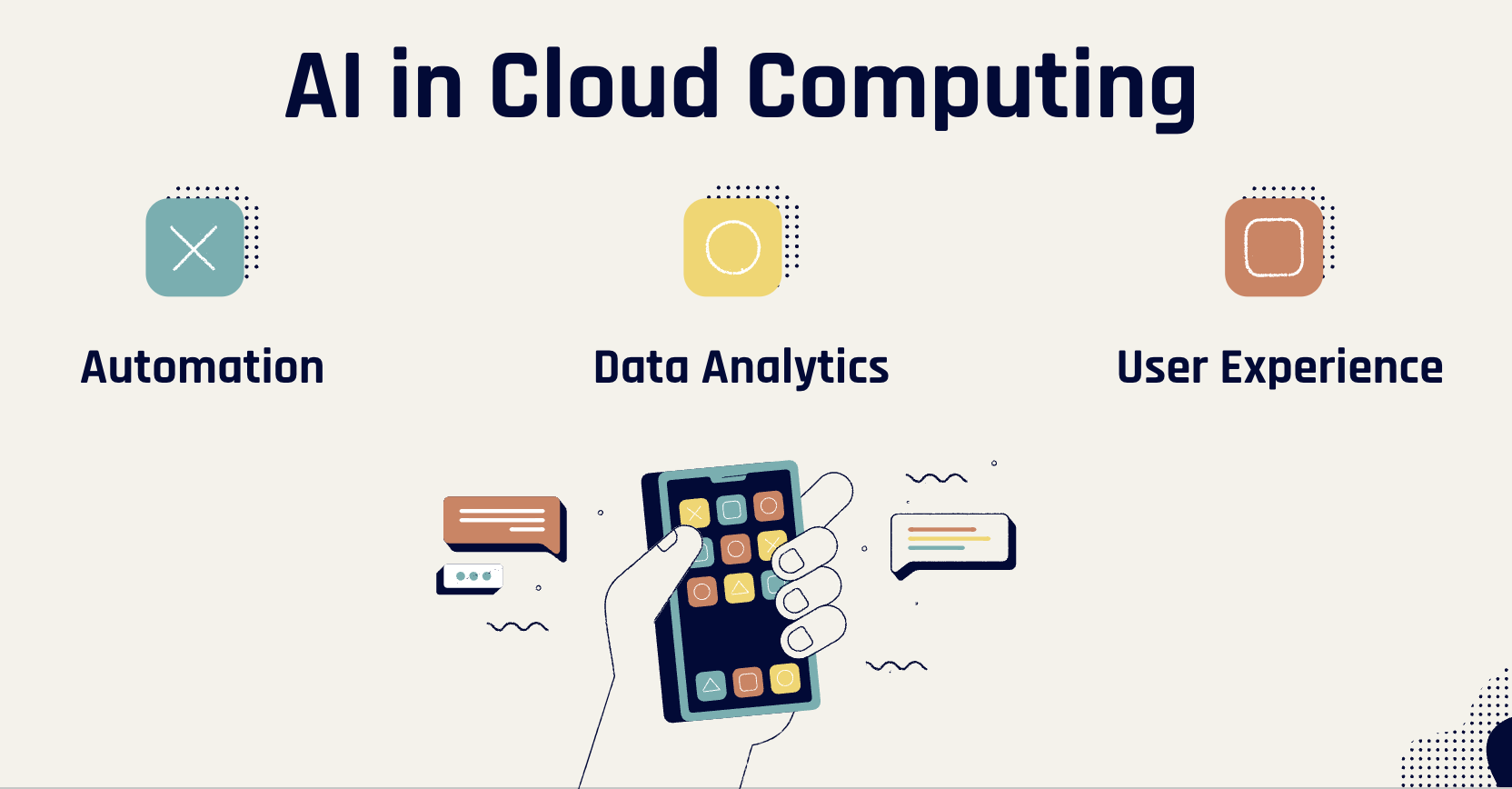The business world in recent times is very closely connected to digital infrastructure due to its heavy reliance on data analysis to ensure the best customer experience. It has led to the growing digitization of enterprises that also tend to explore the varying technological options in the market. Businesses continue to look for the next best option available that is cost-effective and can offer data security.
Among many tools is the use of websits and mobile applications. The increased use of different platforms for digital communication has led to the creation of complex computing networks. Cloud computing is one such network that allows devices to connect via the internet and share information.
In this article, we will discuss the future of cloud computing and the trends it is expected to follow. We will also explore the impact of cloud computing when integrated with artificial intelligence and the tech industry.
Read along for a better understanding of the kind of future that awaits cloud computing as it changes the modern-day technological world.
Introduction
Cloud computing is a digital version of a communication network that enables different devices and apps to connect through the internet. It not only provides a communication network but also manages data processing and storage. It allows enterprises to run their business processes in an efficient manner with the cloud service without making major investments to buy data handling and storing equipment.
Before cloud computing technology, businesses had to maintain massive data centers to manage data storage for further analysis. Cloud providers brought a more feasible solution to the market that enabled enterprises to adopt cloud-based solutions with better data protection, owing to cloud storage. The increasing popularity of cloud technology made it a crucial part of business strategy for all enterprises.
What is cloud computing?
Cloud computing is a modern-day method of digital communication between multiple devices via the central cloud. It offers to store, process, and communicate data for several devices connected to it via the internet.
Cloud service has transformed the digital experience for individuals and businesses. From the prevalent social media platforms to online streaming and digital banking, all consist of various cloud services that we enjoy on a daily basis. While we understand the importance and impact of the cloud computing industry through the popularity and easy accessibility of the internet, we must also take a look at the future of cloud services.
This article will take a deeper look into the recent trends and predictions around cloud computing. It will also explain the growing complexity and efficiency of the cloud computing market with the use of artificial intelligence. Finally, the article will also explore the current standing, advantages, and future of cloud computing in the tech industry.
Trends and Predictions for the Future of Cloud Computing
Cloud technology entered the market with the offer of improved data storage capabilities, among other computing needs. It quickly gained the attention of most businesses struggling to make their mark in the modern digital world. Cloud services offered a solution that enhanced their computing power and hence the capacity to handle more data. Moreover, the advanced data storage techniques offered better handling of sensitive data with cloud service servers.
The many advantages have led to the growth and popularity of cloud computing since it was made accessible. However, the modern world demands us to look and plan ahead alongside. Let’s take a look at the future of cloud-based networks and some popular cloud computing trends.
What are the future trends of cloud computing?
Some of the most common cloud computing trends include:
- Multi Cloud / Hybrid Cloud
- Quantum Computing
- Serverless Computing
- Edge Computing
- Artificial Intelligence
Multi Cloud / Hybrid Cloud

Hybrid Cloud Brings Together Private and Public Cloud (Alamy)
Multi cloud is the most common cloud computing trend that combines the use of the public and private cloud for an enterprise, offering greater flexibility by sharing the workload between the two types of cloud storage. It is also known as the hybrid cloud. It is primarily common among growing businesses that expect a significant increase in their data source over time as it offers them better control and security with minimum expenses.
Quantum Computing
It is a cloud computing trend that uses the learning of quantum physics to run complex algorithms when processing data. It offers an improved data-handling capacity that can process massive amounts of data in a significantly shorter time.
It allows data storage in the form of a qubit which is a much simpler form of data. It is one of the extremely cost-effective cloud computing trends.
Serverless Computing
It is a fairly new trend in cloud computing that creates a network architecture that does not rely on physical servers for communication. It can revolutionize the idea of computing as businesses do not have to manage and maintain the servers to host applications. As a result, businesses can deploy new services in a simpler manner at a lesser expense.
Edge Computing

Bringing Cloud Services to the Edge (IEEE Innovation at Work)
As the name suggests, the trend of edge computing brings cloud service to the edge of the network. It enables businesses to manage the processing and analysis of the data saved on the device where it is stored. Some of its major benefits include reduced latency, better data privacy, cost saving, and real-time processing of data. It has the potential to redefine the method of computing in the future.
Artificial Intelligence
While cloud computing continues to redefine the infrastructure of digital communication, the advent of artificial intelligence has enhanced the impact of cloud-based services. It has brought the idea of cloud-based AI systems to light that can handle data more intelligently. It enables cloud technology to ensure more effective data processing.
These cloud computing trends signify the increasing rate of cloud adoption in the technological world. While each trend has its own significance, multi cloud remains the most popular among enterprises as it is an easy and cost-effective update from the traditional cloud. Moreover, the hybrid cloud also offers ease in the scalability of operations, making it a favorite option for businesses.
Future of Cloud Computing from 2025-2030
While cloud adoption is gaining momentum over time, it is important to analyze the future trends of cloud computing in the rapidly evolving technological world. Let's explore some of the potential predictions for the cloud computing future.
The growth of multi cloud
The introduction of a hybrid cloud has led to the creation of more dynamic cloud environments that allow businesses to integrate multiple cloud providers comfortably. As a result, they can get the best cloud services for every requirement, making it one of the prominent predictions for the cloud computing future.
The rise of edge computing
Cloud migration to the edge has been majorly due to the improved data processing power of edge devices. With the demand for real-time data analytics, access to the service edge has become crucial for businesses to improve the user experience for their customers. Edge computing is vital in this future trend due to its promise of better personalization and reduced latencies in processing data.
The introduction of AI to machine learning
Some of the key features of bringing AI to the machine learning world are automation and the self-maintenance of systems. Since both characteristics are essential for businesses for efficient processes, AI has a major place in the future trends for cloud computing.
While the cloud continues to grow, each prediction has promising future applications in the digital world. However, cloud service providers must revisit their future plans to transform their services to integrate these futuristic ideas. They will need better resources and more tools to ensure that they provide up-to-date cloud-based services to their customers and explore the true potential of cloud computing. Despite the challenges of transformation, if the proper steps are taken, it can turn into the best possible opportunity for the growth of cloud resources.
Artificial Intelligence in Cloud Computing
One of the most revolutionizing cloud computing trends is the introduction of artificial intelligence into cloud services. It is a way to transform the functionality of data centers with better data handling techniques, enabling serverless computing and much more in the process.

Impact of AI on Cloud Computing
Some key ways AI can impact cloud computing include:
Automation
From basic data management tasks to identifying patterns and predicting future trends, AI can work on the entire range of tasks in less time and more efficiently. Since it does not require supervision or tests to ensure AI works accurately, it can help businesses to automate processes, enhancing operational efficiency.
Data Analytics
AI does not only identify patterns and predict trends but also has the capability for advanced data analytics. It can provide insights into network operations and customer behavior, leading to better reliability and efficiency of business processes.
User Experience
Integration of AI into the cloud computing experience has resulted in the form of chatbots and personalized recommendations. It enhances a user's digital experience when they access a website or an app, consequently leading to higher profit and greater customer satisfaction.
It's the overlap of cloud and artificial intelligence that can automate business operations, create better insights, and enhance user experience. Hence, bringing all the necessary tools of success together to redefine the digital experience for an enterprise and its users alike.
Cloud Computing in the Tech Industry
The tech industry is increasingly focusing on the digital spaces accessible via the internet to enhance its functionality and communication in the existing and potential market. Cloud computing has become a great leap towards success that also pioneered the interconnectivity of the world through the internet. Three types of computing service models available are Platform as a Service (PaaS), Software as a Service (SaaS), and Infrastructure as a Service (IaaS). Each type deals with a unique aspect of the digital world, offering complete support for processing and storing data.
Cloud providers have created a digital architecture that can help enterprises build and scale at a faster rate effectively without huge expenses. The industry is favorable for entrepreneurs with startup ideas. It has also led brought tech-savvy people into the business field as contenders with an equal footing. As a result, the tech industry is booming with diverse and innovative solutions and ideas for customers, resulting in a competitive and creative marketplace.
Moreover, recent tools of software and hardware development, like websites and mobile applications, have gained popularity in the industrial world. App development for tech startups and other businesses has become common in the digital world today. The growth of cloud services and lack of dependence on data centers has revamped the industrial infrastructure for fast-paced technological development.
However, cloud computing brings new challenges in understanding the new infrastructure and changing the traditional methods of communication. Businesses have to adapt the new ideas on an ideological and architectural level. While these look like huge barriers to the expansion of cloud computing, the development of this computing technique has improved connectivity and networking among people and enterprises. Hence, no one has to face and address these issues in isolation.
Cloud-based applications have created a secure mode of communication, making people and information more accessible. Hence, cloud computing has redefined the industrial world with new and creative technological features. It has promoted a network of collaboration, automation, and innovation, promising future trends of a dynamic and resilient tech industry.
Conclusion
Cloud computing is the latest form of digital communication that offers a dynamic environment to process and store data. It has taken many forms, leading to new trends in the field. Some of the leading ones include multi cloud, serverless computing, and edge computing. The many variations have redefined the world of computing with innovative solutions to problems of online networks.
While cloud services are popular in the present world due to their faster and more secure communication, the future holds a whole new aspect of the technology. The rise of multi cloud and edge computing is expected to revamp the modern-day cloud and create a better version of the architecture. It has led to ideas of a secure access service edge that offers even better forms of data security and personalization.
The introduction of AI has also promoted the success of the cloud and enhanced its versatility for today’s enterprises. It offers automation, real-time data analytics, and improved user experience that redefines the digital experience for businesses and individuals alike. Moreover, cloud computing has created a more inclusive atmosphere in the tech industry as people have better accessibility to the market. It is an environment that supports the birth and growth of startups and entrepreneurial ventures.
While ideas of serverless computing and AI have given cloud computing a major boost in the digital market, it has untapped potential that still remains to be explored. Increasing the use of cloud computing with the integration of AI, IoT, and other smart devices can create a more interactive digital world. It can be easily said that cloud computing will provide the basis for extensive innovation and advancement of the technological world in the future.
Apr 4, 2023
